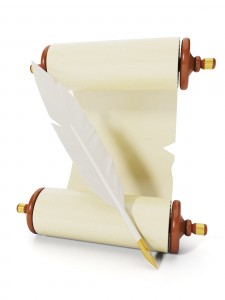No Fun and Little Profit: Making Medieval Books

Medieval Fragments has a great little thing on the nitty-gritty details of how books were originally commissioned and sold, including inserting spam (“If someone else would like such a handsome book, come and look me up in Paris, across the Notre Dame cathedral.”) and the universality of location-location-location (again, “across the Notre Dame cathedral.”)
Although making books for profit was a common scenario in the later Middle Ages, it did not make you particularly rich. On the last page of a Middle Dutch chronicle a clearly frustrated scribe wrote, “For so little money I never want to produce a book ever again!” This world of professional medieval scribes, the underpaid and others, was shaken up by the coming of Gutenberg’s printing press, around the middle of the 15th century. The ink pots dried up and the handwritten book slowly turned into an archaic object that was more costly than its printed counterpart. In the 16th century only large choir books (which did not fit on the press) and handsome presentation copies, custom-made for an affluent client, were still written by hand.
So, you know, it’s never been a great industry for scribes, is what we’re getting at here. If you’re ever visiting the UK, the Sir John Ritblat Gallery at the British Library has the most gorgeous illuminated manuscripts, and you’ll just stand there gawping and marveling at the work they must have taken.